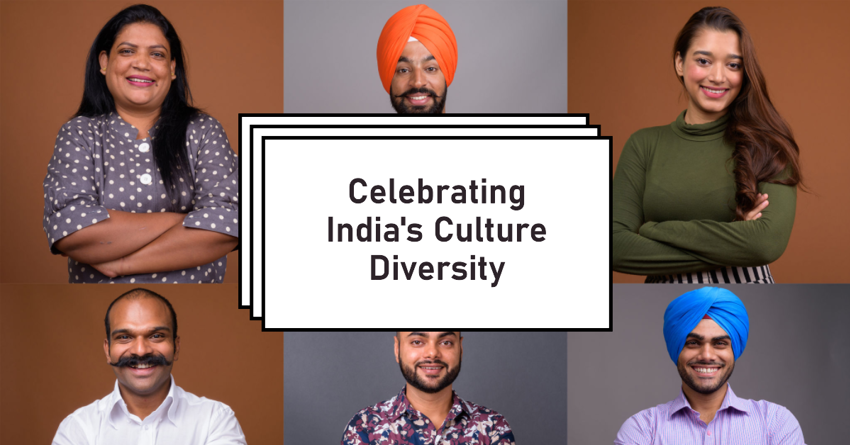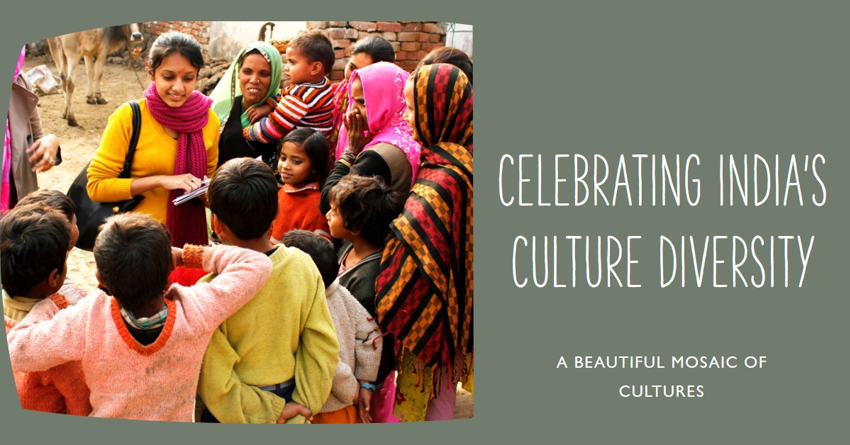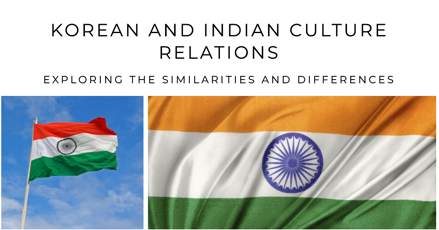Importance of Culture Diversity Embracing and Appreciating Differences
Cultural diversity is a rich tapestry that weaves together the vibrant colors of humanity. In a world that is increasingly interconnected, understanding and appreciating different cultures has become more important than ever. This blog post explores the significance of cultural diversity and offers insights into how we can embrace and appreciate the diverse cultures both within India and across the globe.
India: A Kaleidoscope of Languages: India is known for its linguistic diversity, with over 1,600 languages spoken across the country. From Hindi, Bengali, and Tamil to Marathi, Gujarati, and Punjabi, each language represents a unique cultural identity. Exploring the linguistic diversity of India allows us to delve into different scripts, dialects, and literary traditions, fostering a deeper appreciation for the richness of communication.
Clothing: A Reflection of Culture: Indian clothing is an exquisite display of cultural diversity. From the vibrant sarees of the South to the intricate lehengas of the North, traditional attire showcases the unique customs and heritage of each region. Exploring the various clothing styles and textiles, such as the Banarasi silk, Kanjeevaram silk, or Bandhani, allows us to understand the craftsmanship, symbolism, and artistry behind traditional garments.
Traditions and Festivals: India's traditions and festivals are a testament to its cultural diversity. From Diwali, the festival of lights, to Eid, Holi, Navratri, and Pongal, each celebration brings forth unique rituals, music, dance, and cuisine. By participating in these festivities, we not only experience the joy and camaraderie but also gain a deeper understanding of the cultural values and beliefs that shape Indian society.
Weddings: A Melting Pot of Traditions: Indian weddings are a true reflection of cultural diversity, combining rituals, attire, and customs from various regions. From the colorful attire of a Punjabi wedding to the intricate rituals of a Bengali wedding or the grandeur of a South Indian wedding, each ceremony encapsulates the unique traditions and practices of different communities. Exploring the diverse wedding customs allows us to appreciate the beauty of cultural intricacies and the significance of matrimonial bonds.
Culinary Delights: India's culinary landscape is a delightful fusion of flavors and spices. From the fiery curries of the North to the aromatic biryanis of the South, each region has its own culinary specialties. Exploring the diverse cuisines not only tantalizes our taste buds but also unveils the historical, geographical, and cultural influences that have shaped Indian gastronomy.
Embracing and appreciating cultural diversity is a journey of exploration, understanding, and respect. By immersing ourselves in the languages, clothing, traditions, festivals, and culinary delights of India, we gain a deeper appreciation for the richness and diversity of the nation. Let us celebrate the kaleidoscope of cultures that make up India and strive for a world where cultural diversity is cherished, valued, and embraced.
Exploring Global Cultural Gems: Beyond India's borders, there is a world of cultural diversity waiting to be explored. From the ancient traditions of China to the flamenco rhythms of Spain, each culture offers a unique perspective and contribution to the global tapestry. By immersing ourselves in different cultures through travel, literature, music, and art, we broaden our horizons, challenge our assumptions, and cultivate a sense of empathy and inclusivity.
Breaking Down Stereotypes and Prejudices: Embracing cultural diversity goes beyond surface-level appreciation. It requires us to confront our own biases, challenge stereotypes, and dismantle prejudices. By engaging in meaningful conversations, actively listening to diverse perspectives, and educating ourselves about different cultures, we can break down barriers and foster a more inclusive society.
Promoting Cultural Exchange and Collaboration: Cultural diversity thrives when there is an exchange of ideas, experiences, and traditions. Through collaborative initiatives, such as cultural exchange programs, art exhibitions, and language classes, we can create opportunities for individuals from different cultures to connect, learn from one another, and build bridges of understanding.




0 Comments